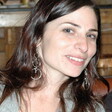The Electronic Intifada Podcast 4 January 2018
The first intifada began 30 years ago last month.
It was carried through unified, collective action and the emergence of popular committees. Palestinians organized general strikes, opened underground schools, engaged in mass boycotts of Israeli goods and sheltered fighters wanted by the Israeli army.
The momentum that the first intifada created in those first few weeks was a historical Palestinian achievement, explains Ziad Abbas, a journalist who now works with the Middle East Children’s Alliance in Berkeley, California.
The main weapons Palestinians used during the first intifada were “the stones, the slingshot and organizing,” Abbas tells The Electronic Intifada Podcast.
Messages contained in leaflets, authored and distributed in secret to communities across Palestine by a unified political leadership, were written onto walls and listed the schedules for daily strikes and protests.
“The walls in the refugee camps, in the cities, in the villages, became the newspaper, the magazine,” Abbas says. “It organized the people.”
Abbas, who grew up in the Dheisheh refugee camp near Bethlehem, describes the mood across the occupied West Bank in the early days of the first intifada.
He remembers the distinctive sound of the stores locking their doors each day during general strikes and remarked on the spontaneous, collective resistance to the Israeli army’s daily invasions and violence.
As a journalist, Abbas says that it took creativity in order to circumvent Israel’s heavy censorship of Palestinian reportage.
“The Israelis were censoring every letter, every word in our newspapers,” he tells The Electronic Intifada Podcast.
An excerpt of an interview with Abbas is part of The Electronic Intifada Podcast. Listen to the full, hour-long interview with him via the media player below.
“Nostalgia”
“As someone who was born after the start of the first intifada, part of my memory growing up and listening to stories from people who lived through the first intifada, who were active during the first intifada, it always brings nostalgia to me,” says Jerusalem-based journalist Budour Youssef Hassan.
The first intifada was inclusive to Palestinians across “all walks of life,” Hassan tells The Electronic Intifada Podcast. “But there also was a significant dimension of class consciousness and a gender dimension to it.”
Women were acting “as foreign ministers,” Hassan explains, due to the organizing that they did inside and outside of their homes – and because of the mass numbers of arrests that targeted men during the uprising.
Hassan compared the strategies and tactics in organizing during the first and second intifada – which began in 2001 – and how the lessons learned during both uprisings influence today’s popular resistance movements against Israel’s ongoing colonization and occupation, especially in Jerusalem.
“We should not copy what happened in 1987 – we should look with an attempt to learn and to discuss opportunities” for the future, Hassan says.
“Sense of hope”
“Palestinian collective action gave everyone a sense of hope,” writes Jennifer Bing of the American Friends Service Committee in an article for The Electronic Intifada, about her time in the West Bank during the first intifada. Bing reads her piece for The Electronic Intifada Podcast.
Bing says that amidst failed peace processes and Israel’s escalating violence, it is critical to advocate for Palestinian children subjected to systematic abuse, including torture and solitary confinement, in Israel’s military detention system.
Bing, who leads the No Way to Treat a Child Campaign along with Defense for Children International - Palestine, explains that three decades after she began advocating for children on Capitol Hill, there is finally an indication that US lawmakers are considering the rights of Palestinian children.
Since the Promoting Human Rights by Ending Israeli Military Detention of Palestinian Children Act was introduced into Congress in November, the number of sponsors has doubled.
“Perhaps it is too soon to say that an uprising on Palestinian human rights is taking place in Washington,” Bing writes.
“But for certain, we are beginning to shake off the silence that typically existed when calls for accountability were asked of members of Congress.”
Listen to Jennifer Bing, Ziad Abbas and Budour Hassan via the media player at top.
Theme music and production assistance by Sharif Zakout
Music: “Arrozona” by Sabah
Image: Palestinian women confront Israeli soldiers, Jabaliya refugee camp, Gaza, 1988. (Robert Croma / Flickr)
Subscribe to The Electronic Intifada Podcast on Apple Podcasts (search for The Electronic Intifada). Support our podcast by rating us and leaving a review.





